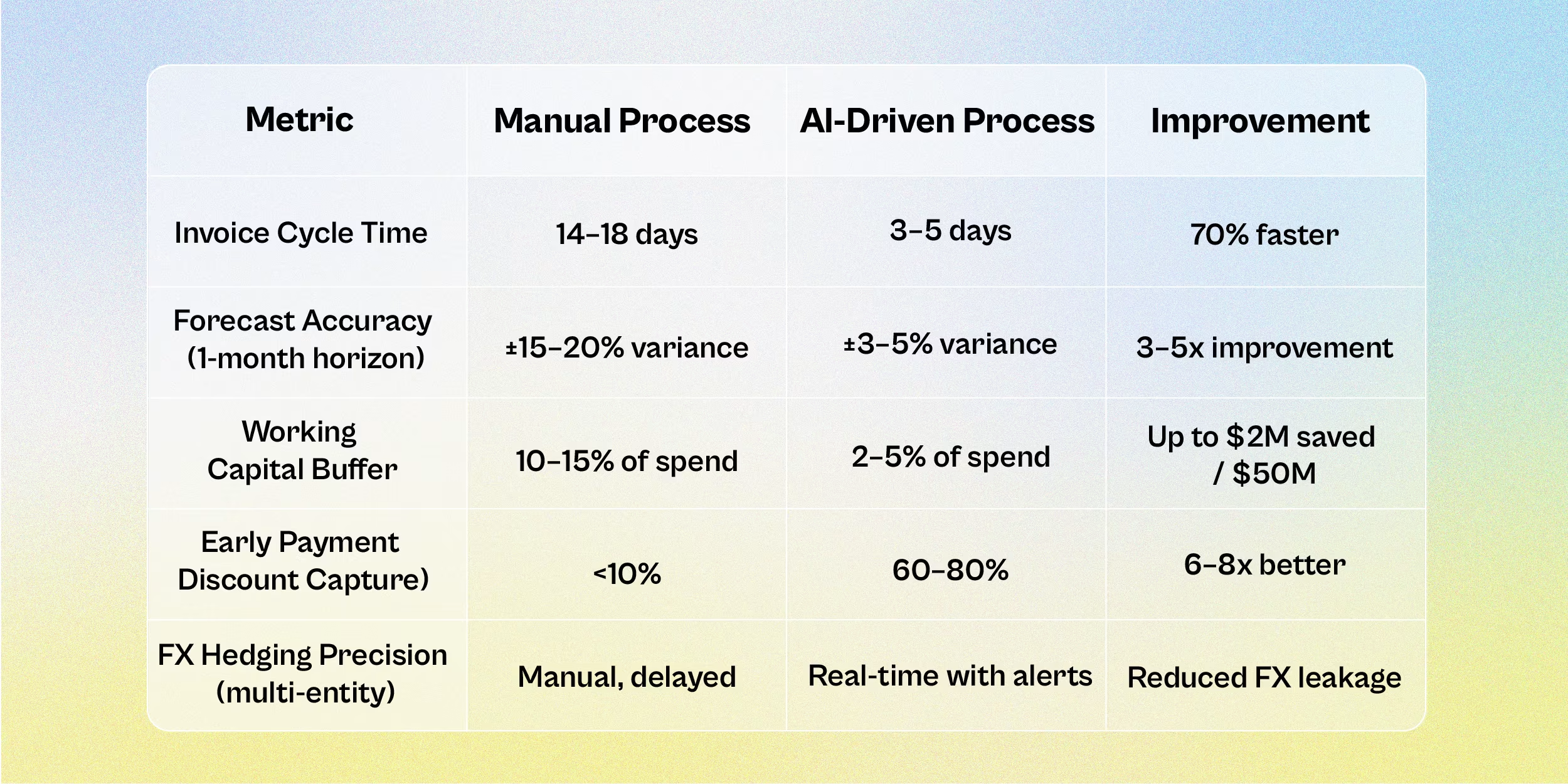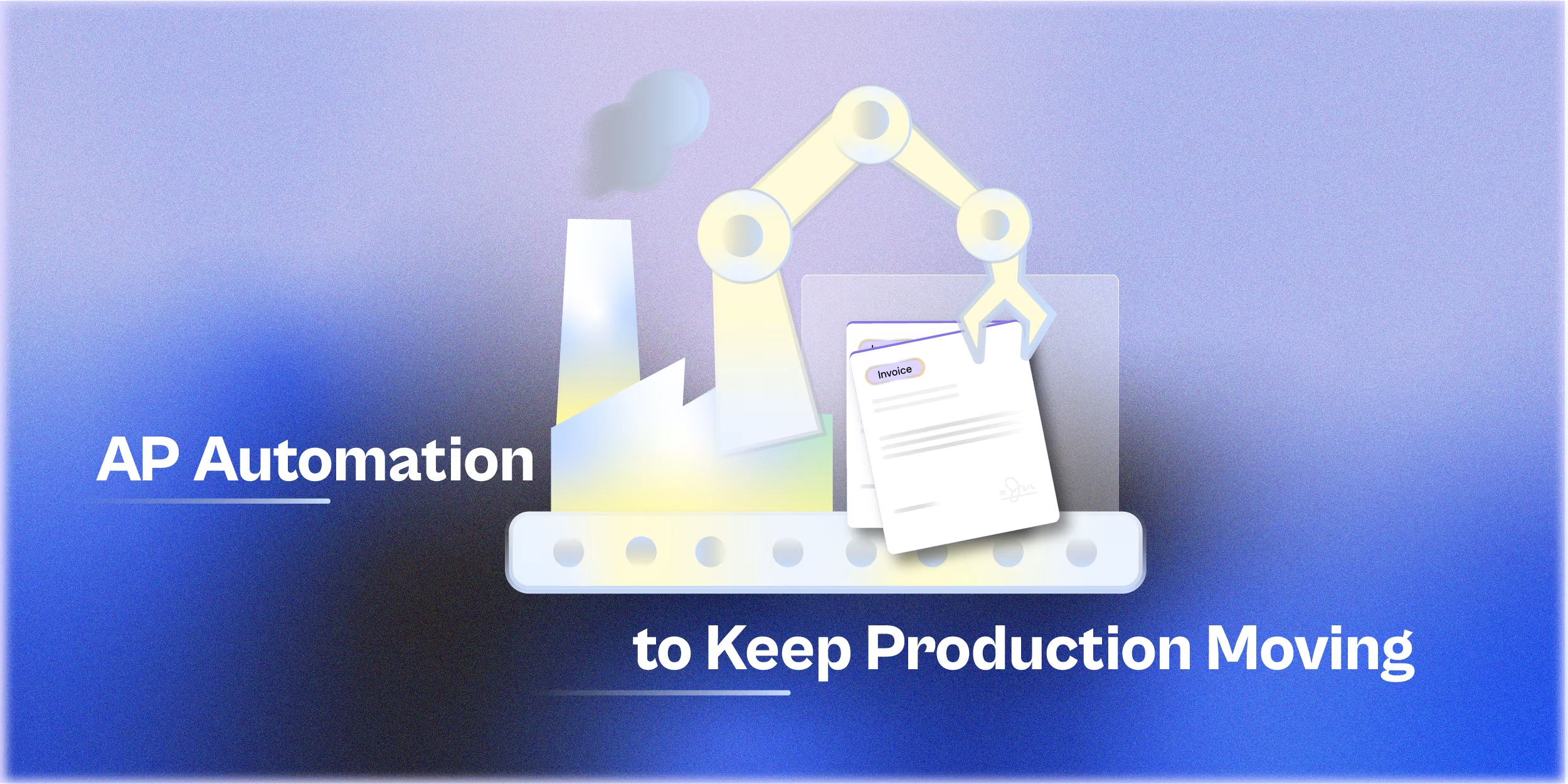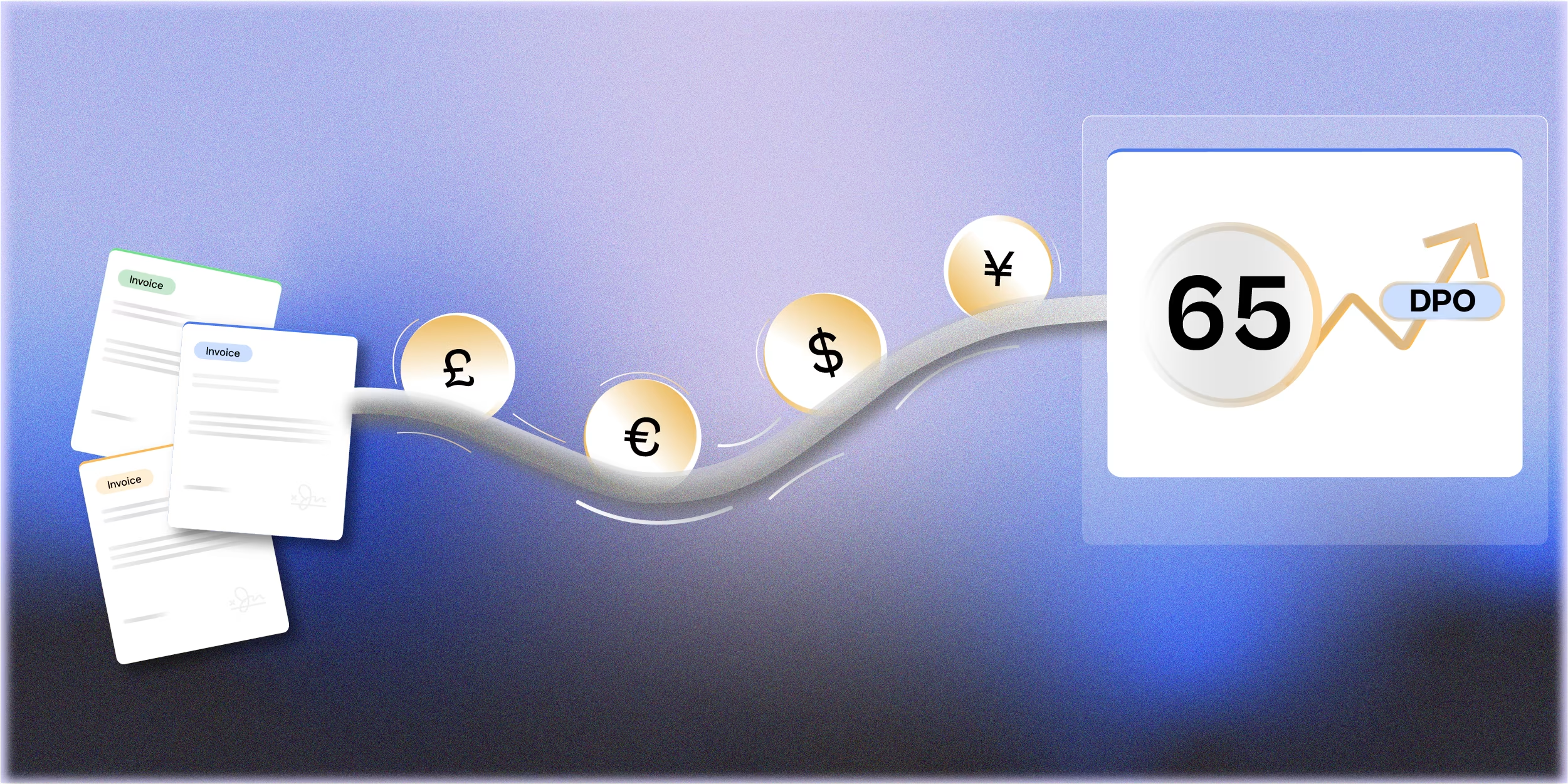Working capital has long been treated as a static snapshot. But in today’s fast-moving environment, that approach leaves cash on the table.
Modern finance leaders are shifting to dynamic working capital optimization using AI to continuously rebalance payables, receivables, and cash across entities. This is more than just AP automation. It's about intelligent, policy-based control over timing, liquidity, and risk.
Let’s explore what that means and how AI makes it scalable.
Why Static Working Capital Models Fall Short
Traditional working capital models rely on quarterly or monthly cycles:
- DPO (Days Payable Outstanding) is manually tracked
- Forecasts are based on past data, not real-time activity
- Payment terms are fixed, regardless of cash position or FX exposure
This creates problems:
- Missed early payment discounts
- Poor visibility into liquidity across entities
- Excess cash held “just in case” costing 5–10% in opportunity cost annually
AI Makes Working Capital Dynamic - Here’s How
AI doesn’t just speed up workflows, it enables finance to make real-time cash decisions based on live data. Here are the core AI-driven levers:
1. Real-Time AP Cycle Intelligence
AI tracks invoice status, approval delays, and payment schedules continuously. This enables:
- Policy-based payment timing (e.g. “Pay net-30 unless cash balance > X”)
- Better supplier term compliance
- Identification of early payment opportunities at scale
2. Predictive Treasury Forecasting
AI models combine invoice flows, FX exposure, payroll, and receivables to forecast liquidity down to the entity level, by day. CFOs gain:
- Cash position heatmaps
- FX-adjusted cash flow predictions
- Alerting for upcoming shortfalls or excesses
3. AI-Based 3-Way Matching to Unlock Control
By automating 3-way matching (PO ↔ Invoice ↔ Receipt), AI reduces overpayments and disputes while maintaining accuracy — critical in inventory-heavy environments. This drives:
- 60–80% reduction in invoice errors
- Faster payment cycles (3–5 days vs 14–18 manually)
- Increased trust in forecasts
Strategic Impact for Mid-Market CFOs
For finance teams managing $20M–$500M in annual spend, dynamic optimization isn't just nice to have, it’s a growth enabler. Here’s how:
- Improved liquidity utilization: Move from reactive to proactive cash management
- Cross-entity visibility: Align payables, receivables, and cash by currency and geography
- Smarter risk mitigation: Forecast FX needs, avoid unplanned drawdowns, reduce idle cash
Best-in-class firms using dynamic AP and treasury tools reduce working capital buffers by 15–20%, freeing millions for reinvestment.
ROI Benchmarks: AI vs Manual Optimization

Dynamic working capital optimization isn’t about squeezing suppliers. it’s about turning finance into a live operating system, with AI as the decision engine.
By automating invoice insights, treasury forecasts, and payment timing, finance teams unlock liquidity, reduce risk, and gain control all without expanding headcount.
Ready to unlock dynamic working capital?
Book a demo to see how Finofo automates AI-driven AP and treasury workflows.







